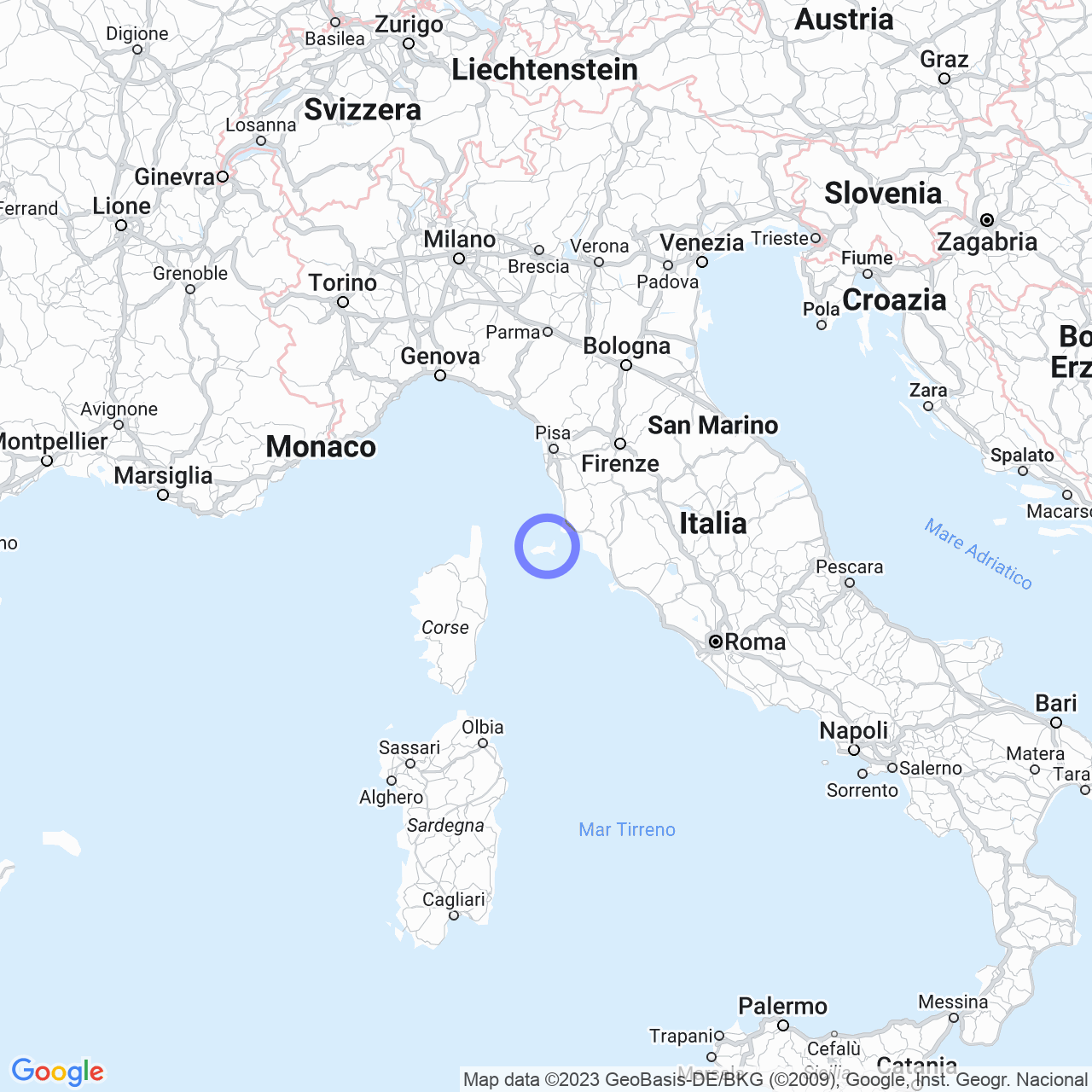Portoferraio
Portoferraio: the island of Elba and its geological characteristics
Portoferraio is an Italian commune located on the Island of Elba, a wonderful island situated in the Tyrrhenian Sea, a few kilometers away from the Tuscan coast. This island is approximately 27 km long and 18 km wide, and is the third-largest island in the Mediterranean Sea. The Island of Elba is a beloved tourist destination, both for its natural beauty and the history that accompanies it. Portoferraio is the largest commune on the Island of Elba by population (with about 11,810 inhabitants) and the second-largest by extension, after Campo nell'Elba.
Territory
From a geological perspective, the Island of Elba is very interesting: it is predominantly composed of pink and white granite, which give the landscapes unique colors and shapes. The area of Portoferraio is classified as seismic zone 4, i.e. with a very low seismicity, as established by PCM 3274 of 20/03/2003.

Climate
From a climate perspective, Portoferraio and the Island of Elba in general fall under climate zone C, with very high atmospheric diffusivity (Ibimet CNR 2002). This means that the climate is mild and temperate throughout the year, without ever reaching excessively high or low temperatures.
The history of Terra degli Etruschi
The Island of Elba has been inhabited since ancient times: several peoples have in fact succeeded each other over the centuries, leaving behind traces of their presence. According to Greek mythology, the place where Portoferraio now stands was known as "Porto Argo", a port where Jason and the Argonauts landed in search of Circe. In Roman times, this area was very popular, as evidenced by the remains of two seaside villas (the Roman villa delle Grotte and the Roman villa della Linguella).
The foundation of Portoferraio
Portoferraio was founded in 1548 by Cosimo I de' Medici, Grand Duke of Tuscany. The city was designed by the architect Giovanni Camerini, who called it "Cosmopoli", or "City of Cosimo". The city was intended to be an impenetrable fortress that could guarantee the protection of its inhabitants. Over the centuries, Portoferraio became an important commercial center, thanks to its strategic location.
The evolution of the toponym
The original name of this place was "Ferraia" or "Ferraria", as evidence of the ironworking activities that characterized it since Etruscan-Roman times. The name later changed to "Ferraio" and then to "Porto Ferraio". Finally, over time, the name of the city was simplified to "Portoferraio".
The fortifications
Several fortifications were built to protect the city. The Torre del Gallo, located at the entrance of the port of Portoferraio, was equipped with an iron chain that was used to close the port in case of emergency. Other important defensive buildings are the Fortezza del Volterraio and Forte Falcone.
The visit of Napoleon Bonaparte
Portoferraio is also known for being the home of Napoleon Bonaparte during his exile on the Island of Elba. The French general arrived in Portoferraio on May 3, 1814, and reigned over the island for about 10 months. During his stay, Bonaparte devoted himself to the restructuring of the city, building numerous public works and improving sanitation services.
Conclusions
In summary, Portoferraio is a city with a long history that can boast important testimonies of the past. Its geographical position, in the center of the Mediterranean Sea, makes it an important stop for those sailing in these waters. The city, with its numerous fortifications, is an example of how the inhabitants of the Island of Elba have been able to protect their territory over the centuries. Finally, the presence of Napoleon Bonaparte in Portoferraio makes it a very interesting tourist destination, able to satisfy both history lovers and those seeking a seaside destination.
